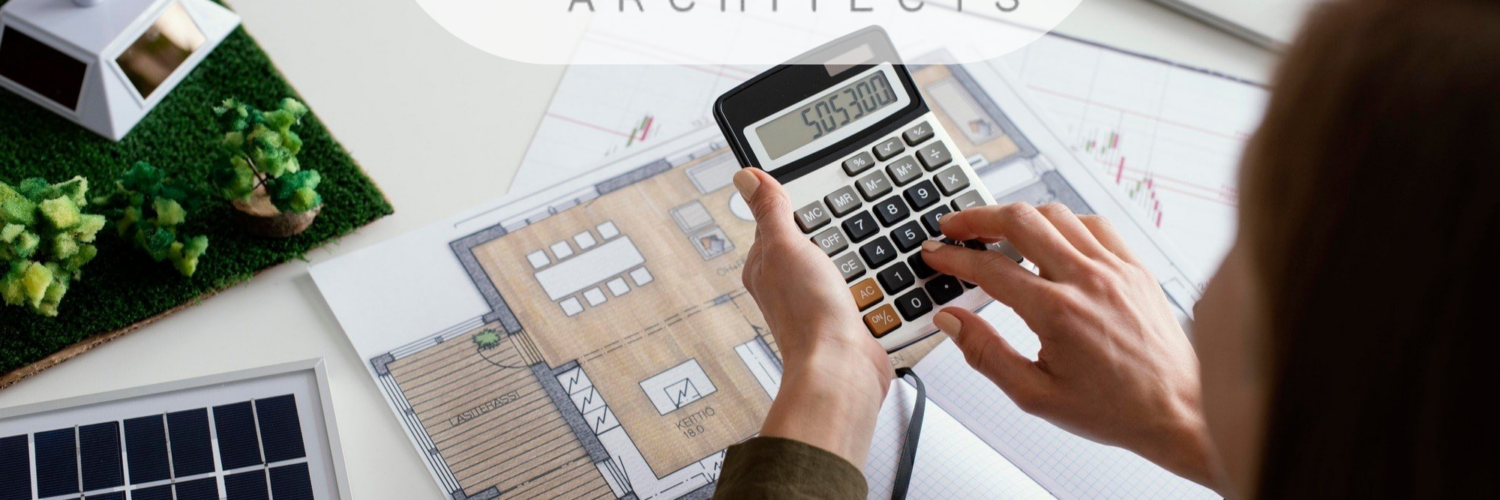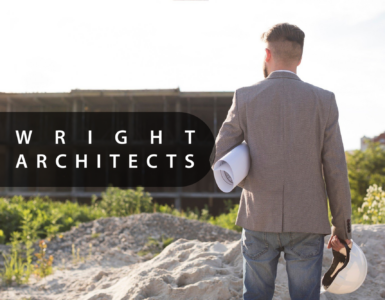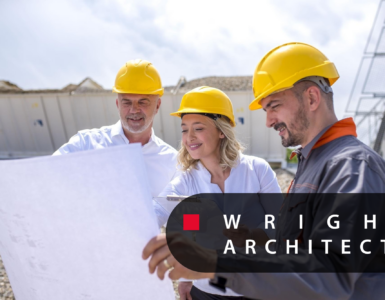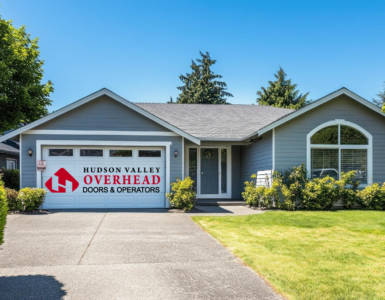The Evolving Landscape of Energy-Efficient Residential Design
As climate concerns intensify and building codes evolve, the residential design sector is experiencing a pivotal shift toward energy efficiency. In the Hudson Valley and across the Northeast, architects, builders, and developers are rethinking how homes are conceived, constructed, and lived in. Wright Architects, a respected design firm in New York’s Hudson Valley, continues to lead conversations around sustainability, regional identity, and high-performance home design.
This transformation is not only about meeting minimum compliance standards but about redefining what modern living means in a world where energy conservation is becoming a central priority. Homeowners are increasingly aware that energy-efficient residential design delivers long-term value, reduced operating costs, increased comfort, and a smaller environmental footprint. At the same time, municipalities and regulatory agencies are implementing stricter codes that require innovation in insulation, window performance, renewable energy integration, and advanced HVAC systems.
Industry data underscores this shift. According to the U.S. Department of Energy – Green Building Guidelines, residential buildings account for approximately 21% of total U.S. energy consumption, with heating and cooling representing the largest share. These numbers highlight the urgent need for solutions that go beyond traditional construction practices.
For architects, this means balancing three essential goals:
- Client aspirations, such as aesthetics, comfort, and lifestyle needs.
- Technical performance, including energy modeling, passive solar strategies, and smart technology integration.
- Environmental stewardship, ensuring that every design decision contributes to long-term resilience and ecological responsibility.
The Hudson Valley has become an ideal testing ground for these practices. Its unique climate conditions and strong cultural appreciation for nature create opportunities to design homes that both reflect local identity and embrace global sustainability standards. By weaving together artistry, science, and community values, firms like Wright Architects are shaping the future of housing, one where energy-efficient residential design is not just an option, but the expectation.
Regional Drivers of Energy-Efficient Design
Building Codes and Zoning in the Northeast
The Northeast has been a frontrunner in advancing stricter energy codes. New York State’s adoption of the Stretch Energy Code-2023 represents a leap forward, requiring new residential projects to meet aggressive efficiency benchmarks. These codes influence not only insulation and HVAC systems but also material selection, airtightness, and renewable integration.
For firms like Wright Architects, compliance is only the baseline. Their work in sustainable architecture in Kingston NY demonstrates how zoning considerations, terrain, and site integration influence both design and energy outcomes. For example, hillside residences in Ulster County require careful orientation and soil studies to balance structural stability with passive solar gain.
Market Demands and Homeowner Expectations
Shifts in the housing market reveal that homeowner expectations are increasingly aligned with sustainability and performance. According to Statista – Residential Construction Trends, 63% of homeowners in the Northeast rank energy efficiency as a top priority when considering new construction or major renovations. This trend underscores a decisive movement away from purely aesthetic-driven decision-making toward a more holistic approach that balances design, function, and sustainability.
The growing interest in energy-efficient house plans is fueled by both economic and environmental considerations. Homeowners recognize that investments in high-performance systems such as geothermal heating, advanced insulation, or photovoltaic integration translate into long-term operational savings. At the same time, these choices directly reduce a household’s carbon footprint, aligning personal living decisions with global climate goals.
For firms like Wright Architects, this shift represents both a challenge and an opportunity. Clients are not only asking for beautiful, custom-designed homes but also demanding measurable efficiency outcomes that validate their investment. This requires a design process that is highly collaborative, data-driven, and responsive to individual lifestyle needs.
Ultimately, the market signals are clear: energy-efficient residential design is no longer a niche preference but a defining standard in the Northeast housing sector. Homeowners want assurance that their residences will stand the test of time delivering comfort, value, and resilience while contributing positively to the environment. Wright Architects continues to meet these expectations by crafting homes that embody both personal expression and high-performance innovation.
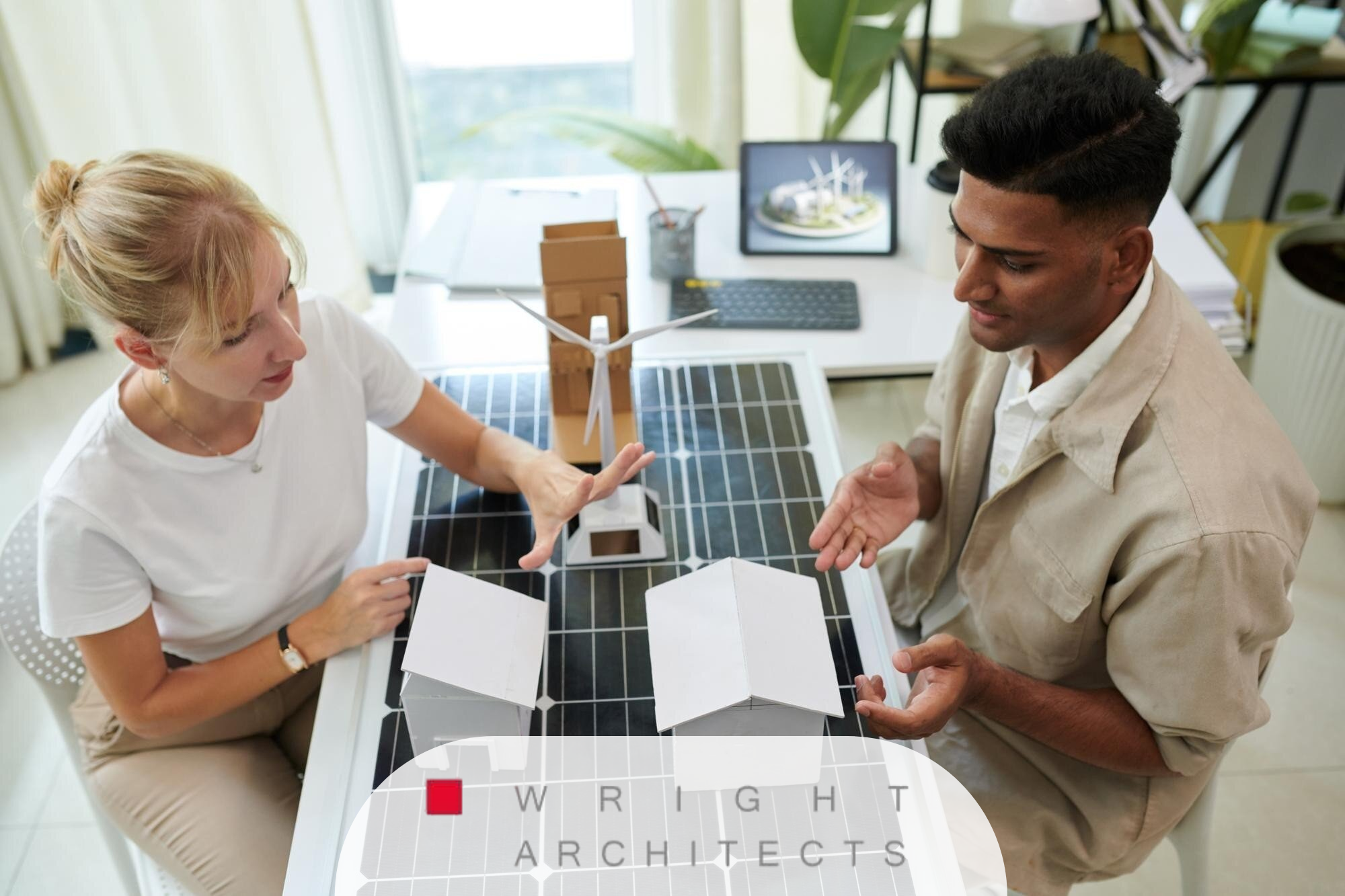
Architectural Strategies Shaping Energy Efficiency
Passive Design Principles
One of the most impactful strategies in energy-efficient architecture is passive design. Rather than relying solely on mechanical systems, passive strategies harness the natural forces of the environmentsunlight, wind, and shadingto regulate indoor temperatures. Wright Architects employs Passive House-certified consultants to optimize orientation, window placement, and envelope performance in every project. Strategic orientation ensures that homes maximize solar gain in winter months while minimizing overheating in summer. High-performance envelopes, including continuous insulation and airtight construction, drastically reduce energy loss.
In the variable climate of the Hudson Valley, these principles are particularly valuable. Hot, humid summers and cold, snowy winters demand resilient solutions that provide year-round comfort while keeping energy demands low. By leveraging passive design, Wright Architects delivers homes that not only meet rigorous energy standards but also foster healthier indoor environments with consistent air quality and reduced reliance on fossil fuels.
Material Innovation
Another critical component of energy-efficient residential design is the thoughtful selection of materials. Wright Architects emphasizes local materials, sourcing stone, timber, and finishes from regional suppliers whenever possible. This approach reduces transportation-related carbon emissions, strengthens local economies, and enhances the cultural authenticity of each home by connecting it to the landscape.
At the same time, material performance plays a direct role in long-term energy efficiency. Innovations such as triple-glazed windows, advanced insulation systems, and low-carbon concrete significantly improve thermal performance. These products not only conserve energy but also contribute to durability and occupant comfort. By carefully blending traditional craftsmanship with modern building science, Wright Architects ensures that material choices reflect both sustainability and design excellence
Design-Build Integration
The design-build approach has gained traction in residential architecture as a powerful framework for achieving energy efficiency. Unlike traditional delivery models that separate design and construction, design-build fosters tighter collaboration between architects, builders, and clients from the earliest stages of planning. Wright Architects frequently works within both Design-Build and Design-Bid-Build frameworks, depending on client needs and project complexity.
This integration offers a major advantage: it ensures that efficiency targets are maintained throughout the entire process. Design decisions such as mechanical system sizing, insulation specifications, and renewable energy integration are executed with precision, reducing the risk of compromises during construction. Importantly, this collaborative model also prevents “value engineering” from undermining sustainability goals. Instead of stripping away critical features to cut costs, the team identifies creative, cost-effective strategies that preserve the integrity of the design.
In a region like the Hudson Valley, where both climate resilience and heritage preservation matter, this approach allows Wright Architects to balance technical innovation with cultural sensitivity, delivering homes that are sustainable, beautiful, and built to last.
Case Studies and Regional Applications
Hudson Valley Residential Architecture as a Model
Recent projects in Hudson Valley residential architecture demonstrate how sustainability and regional identity can be seamlessly integrated into modern living. Unlike generic, one-size-fits-all solutions, homes in this region respond directly to their natural and cultural context.
In the Catskills, for example, residences are often designed with expansive glazing that frames mountain views and maximizes natural light. At the same time, these architectural gestures are balanced with advanced shading systems, high-performance frames, and thermal breaks that prevent heat loss during the winter months. This dual approachcelebrating the landscape while safeguarding efficiencyillustrates how Hudson Valley residential architecture can serve as a model for other regions seeking to merge beauty with performance.
These projects also highlight the importance of materials that both reflect local heritage and support sustainability goals. Natural stone, reclaimed timber, and low-carbon concrete solutions reinforce regional identity while ensuring durability and thermal resilience. By integrating these choices, Wright Architects proves that architecture in the Hudson Valley can be both place-specific and future-ready.
Custom Home Design Services for Efficiency
For today’s homeowners, custom home design services are increasingly defined by the expectation that luxury and sustainability must go hand in hand. Clients want residences that not only reflect their lifestyle and aesthetic preferences but also achieve ambitious energy performance targets.
Wright Architects has pioneered this approach by embedding efficiency systems from the earliest stages of design. In several Hudson Valley projects, geothermal systems have been paired with radiant flooring to provide consistent, low-energy heating. Meanwhile, photovoltaic panels are strategically integrated into rooflines to maximize solar capture without compromising architectural character.
These features do more than reduce long-term operational costs, they create homes that are healthier, more comfortable, and more resilient to climate shifts. Clients benefit from predictable utility savings, improved indoor air quality, and a sense of stewardship in knowing their home aligns with broader environmental goals.
By offering custom home design services for efficiency, Wright Architects ensures that each residence is not only a personal expression of its owner’s lifestyle but also a high-performance structure that pushes the boundaries of what sustainable living can achieve in the Hudson Valley and beyond.
Technology and Smart Systems
The Role of Building Information Modeling (BIM)
Advanced modeling tools have transformed the way architects design and evaluate buildings, particularly when it comes to energy-efficient residential design. Among the most impactful of these tools is Building Information Modeling (BIM). BIM allows architects to create comprehensive digital twins of a project integrating spatial, structural, mechanical, and environmental data into a single model.
With BIM, Wright Architects can simulate energy performance before construction even begins. Factors such as roof slope, shading devices, insulation levels, and window-to-wall ratios can be tested virtually, ensuring that every decision is backed by measurable efficiency outcomes. This predictive capacity reduces costly trial-and-error during construction while giving clients greater confidence in the sustainability of their investment.
Moreover, BIM enhances collaboration between architects, engineers, and builders. By sharing a unified digital model, all stakeholders can coordinate around energy goals, detect conflicts early, and streamline execution. This process minimizes material waste, accelerates construction timelines, and strengthens the alignment between design intent and final performance.
Smart Home Integration
Energy efficiency in 2025 is no longer defined solely by insulation, airtight envelopes, or advanced HVAC systems. Increasingly, homeowners expect their residences to be intelligent ecosystems that allow them to actively manage and reduce their environmental footprint. This is where smart home technologies play a vital role.
Integrated systems now give occupants real-time visibility into how their homes consume energy, whether through lighting, heating, cooling, or appliance use. With automated controls and mobile connectivity, homeowners can make instant adjustments, such as dimming lights, fine-tuning thermostats, or scheduling energy-intensive tasks during off-peak hours.
When combined with energy-efficient architecture, these smart technologies amplify performance outcomes. For example, sensors can automatically adjust shading to reduce solar gain in summer, or synchronize with HVAC systems to maintain consistent comfort while minimizing energy use. In the Hudson Valley, where seasonal shifts can be extreme, this synergy between design and technology ensures resilience, adaptability, and comfort throughout the year.
The integration of smart systems also aligns with broader cultural shifts toward electrification and renewable energy adoption. As more homeowners embrace solar panels, battery storage, and electric vehicle charging stations, smart platforms provide the infrastructure needed to balance supply and demand efficiently. Wright Architects recognizes that the future of sustainable housing is not just passive or active, but an interactive dynamic relationship between architecture, technology, and human behavior.
The Broader Economic and Environmental Context
Policy Incentives
Public policy continues to play a critical role in accelerating the adoption of energy-efficient residential design. Government initiatives, such as the Inflation Reduction Act of 2022, provide unprecedented financial incentives for homeowners, architects, and developers who prioritize sustainability. These programs go beyond symbolic gestures; they deliver tangible savings through tax credits and rebates for renewable energy integration, high-efficiency heat pumps, advanced HVAC systems, and building envelope upgrades.
For architects like Wright Architects, these incentives create opportunities to present clients with designs that align with both ecological responsibility and economic practicality. What might once have been seen as premium, optional features such as solar panels, geothermal systems, or triple-glazed windows are now more attainable, thanks to federal and state-level support. In regions like the Hudson Valley, where demand for sustainable housing continues to grow, policy-driven affordability is helping to normalize high-performance homes as the standard rather than the exception.
Additionally, local and state energy-efficiency programs across the Northeast complement federal initiatives by offering grants, low-interest financing, and performance-based rebates. This layered framework of support ensures that sustainability is not just aspirational, but achievable for a broad spectrum of homeowners and developers.
Real Estate Value
The financial case for energy-efficient residential design extends beyond reduced operating costs. Increasingly, energy efficiency is tied directly to real estate valuation. A 2023 report from the Appraisal Institute highlights that energy-efficient homes in the Northeast command 5–10% higher resale values compared to conventional counterparts. This shift reflects growing buyer awareness that lower utility bills, enhanced comfort, and sustainable features translate into long-term economic value.
For developers and real estate professionals, the implications are clear: sustainability is not only an environmental imperative but also a market differentiator. High-performance homes attract discerning buyers who are willing to pay a premium for quality construction, durability, and advanced systems that align with modern lifestyle expectations. In competitive housing markets like the Hudson Valley, these attributes can dramatically influence demand and absorption rates.
Moreover, appraisers and lenders are increasingly incorporating energy performance metrics into their valuation models. Features such as smart home integration, renewable energy systems, and advanced insulation no longer fall into the category of “nice-to-have.” Instead, they are recognized as core contributors to market value, positioning sustainable homes at the forefront of real estate growth in the region.
By combining policy incentives with demonstrable financial benefits in resale value, energy-efficient residential design is moving from niche innovation to mainstream expectations reshaping both architectural practice and the housing market itself.

Challenges Ahead
Balancing Cost and Performance
While the long-term savings of efficiency are clear, upfront costs remain a barrier for some homeowners considering energy-efficient residential design. Features such as advanced insulation, triple-glazed windows, or renewable energy systems often require higher initial investments compared to conventional construction. However, the financial trajectory of these decisions tells a different story.
Architects and builders play a critical role in communicating the life-cycle value of efficiency investments. Reduced utility bills, tax credits from policy incentives, and lower maintenance costs provide measurable financial benefits that accumulate year after year. In addition, energy-efficient homes consistently demonstrate enhanced property value, offering homeowners stronger returns at resale.
To address cost concerns, firms like Wright Architects emphasize phased implementation strategies, allowing homeowners to adopt efficiency upgrades over time. This approach makes sustainable design accessible to a broader range of clients while ensuring that performance goals are met without overwhelming upfront costs. By framing efficiency as a long-term investment rather than a short-term expense, architects can bridge the gap between aspiration and affordability.
Climate Adaptation
In parallel with efficiency, residential design must increasingly account for climate adaptation. Rising global temperatures, heavier rainfall events, and shifting freeze-thaw cycles present significant challenges for the built environment. In the Hudson Valley, these climate pressures are already shaping material choices, construction methods, and long-term design strategies.
Energy-efficient residential design offers an inherent advantage in this context: many of the same principles that reduce energy consumption also enhance resilience. For instance, high-performance building envelopes not only improve thermal efficiency but also protect interiors from moisture intrusion during extreme storms. Similarly, durable materials such as stone cladding or thermally modified wood reduce maintenance needs and withstand fluctuating weather patterns.
Adaptive systems also play a key role. Smart technologies can monitor indoor conditions and respond dynamically to external stresses adjusting ventilation during heat waves or modulating shading to prevent overheating. Passive design principles, like orientation and natural ventilation, further reduce vulnerability by decreasing reliance on grid-based systems during climate-related disruptions.
By aligning climate adaptation with energy efficiency, architects can deliver homes that are not only sustainable but also future-ready capable of protecting occupants, conserving resources, and maintaining performance in the face of uncertainty. Wright Architects continues to integrate these strategies, ensuring that the homes of today remain safe, efficient, and resilient for generations to come.
Looking Forward: The Future of Northeast Residential Design
The trajectory of residential architecture in the Hudson Valley and across the broader Northeast points to a future defined by the deeper integration of sustainability, technology, and regional sensitivity. As both market forces and climate realities converge, the demand for innovative approaches to energy-efficient residential design will only accelerate.
Firms like Wright Architects are not only responding to regulatory changes and evolving homeowner expectations, but also actively setting new benchmarks for what modern home architect Hudson Valley practices can achieve. Their work demonstrates that architecture is no longer about choosing between performance and beauty, but about weaving together energy efficiency, local character, and modern lifestyle needs into a cohesive, future-ready design.
The architectural community is poised to shape homes that function as far more than physical shelters. The houses of tomorrow are envisioned as sustainable ecosystem environments that foster occupant well-being, conserve energy, and adapt gracefully to changing climate conditions. These homes will reflect regional identity, celebrating the cultural and natural heritage of places like the Hudson Valley, while simultaneously mitigating environmental impact through advanced modeling, passive strategies, smart technology, and resilient materials.
Looking ahead, the question is not whether energy-efficient residential design will define the future, but how quickly architects, builders, policymakers, and homeowners can work together to make it the prevailing standard. By embracing innovation, leveraging policy incentives, and aligning economic value with ecological responsibility, the Northeast has the potential to lead a nationaland even globalmovement toward sustainable living.
In this evolving landscape, firms committed to design excellence and environmental stewardship will not only meet the needs of today but also lay the foundation for resilient, inspiring communities that endure for generations.
Professional Call to Action
Discover how Wright Architects is redefining energy-efficient residential design in the Hudson Valley and across the Northeast. Visit wrightarchitectspllc.com to explore their portfolio of modern, sustainable homes and community projects.
For design inquiries, media opportunities, or project discussions, connect directly with the Wright Architects team. Their expertise in blending sustainability, technology, and regional identity ensures every project reflects both performance and artistry.
Take the next step toward creating a home that is as resilient and efficient as it is timeless: start your conversation with Wright Architects today.

